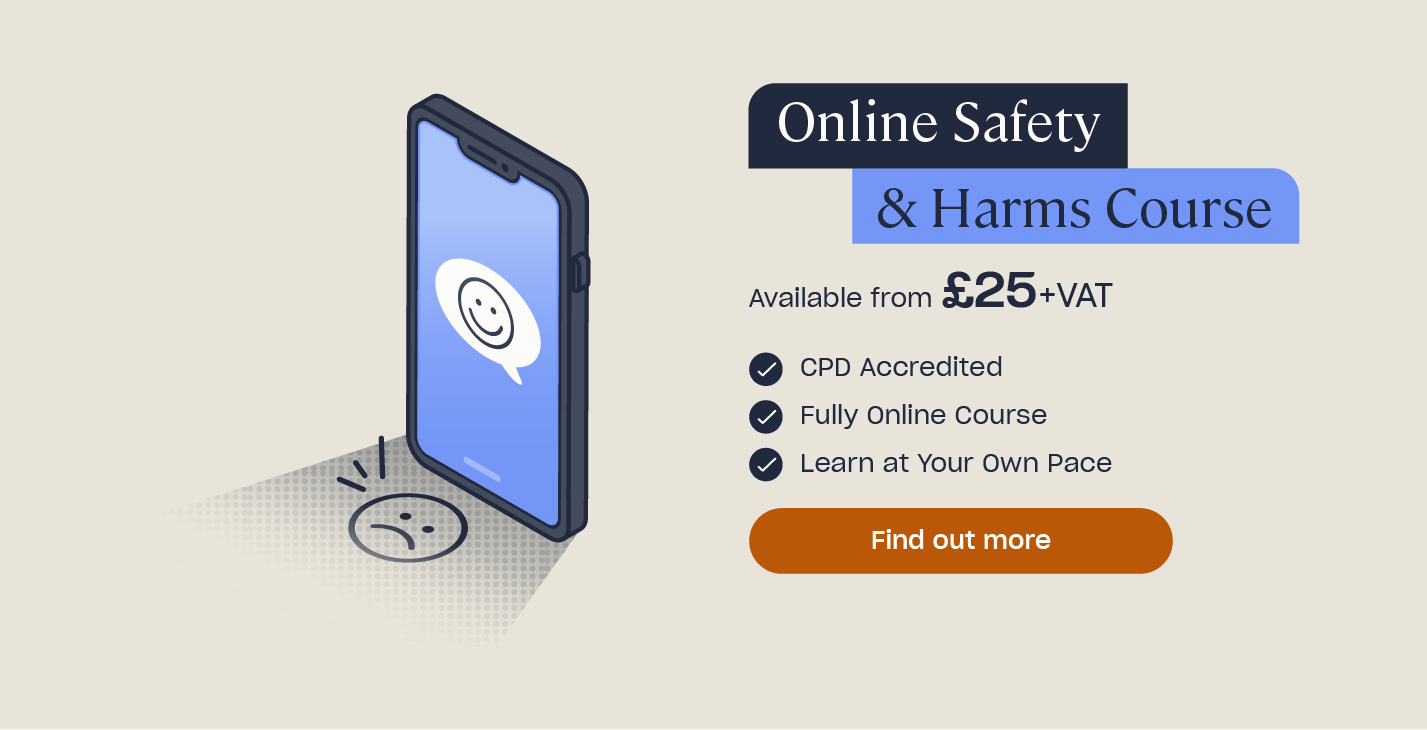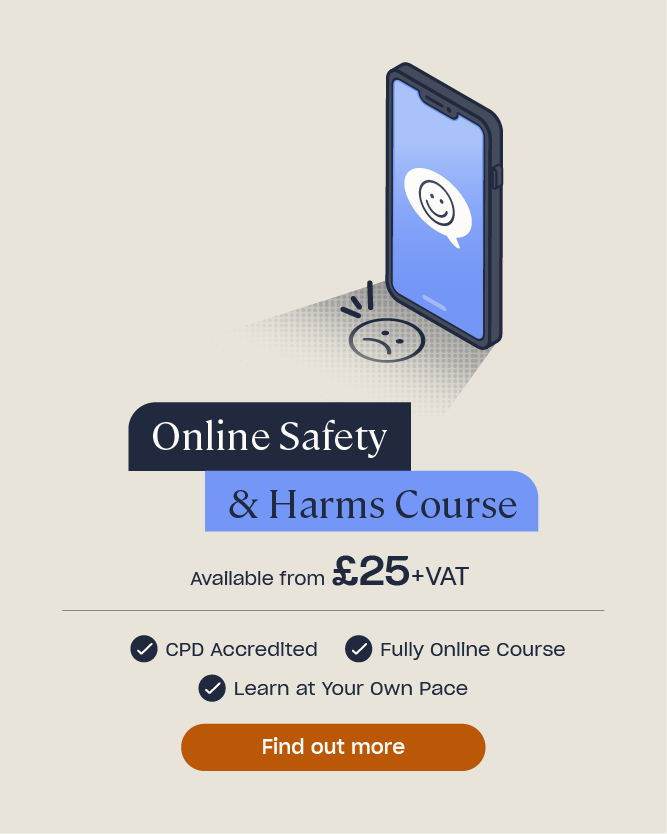Why is Cyberbullying Harmful and What Actions Can You Take?
The amount of time our children spend online and on screens has never been higher and, whilst use of the internet can have many benefits for young people, it does also bring with it dangers that we, the older generation, have never encountered before. In this article, we’ll look at what cyberbullying is and what parents, teachers and other school staff can do to recognise cyberbullying and stop cyberbullying from occurring.
What is Cyberbullying?
Cyberbullying is defined as ‘the use of electronic communication to bully a person, typically by sending messages of an intimidating or threatening nature’. It means using technology to bully or harass someone, meaning that bullying no longer only occurs face-to-face at school but can happen at any time of day or night.
Any child can be bullied online, no matter their social background, age or gender. However, cyberbullying usually occurs because the child is seen as different in some way, whether it’s because of their sexuality, race, disability, introverted nature or even their popularity.
For children, cyberbullying can occur over any device that connects to the internet, including smart phones, games consoles and computers. It can happen on websites, chat rooms, forums, social media, private messages, texts and emails, to name a few. With more and more children engaging in multiple hours of screen time a day, the opportunities for cyberbullying to occur are unwavering.

Types of Cyberbullying
Cyberbullying can involve any of the following activities:
- Trolling (leaving insulting comments).
- Spreading harmful rumours.
- Mobbing (being targeted by a gang).
- Harassment.
- Threatening comments.
- Doxing (sharing private information about someone).
- Stalking.
- Sexting and sextortion.
- Sharing embarrassing pictures or videos.
- Excluding from games or groups.
- Grooming (encouraging self-harm, sexual behaviour or criminal activity).
- Identity theft (if someone sets up a fake profile).
- Setting up a hate group about someone.
- Creating an abusive poll about someone.
- Deception.
Dangers of Cyberbullying
Cyberbullying can often be more dangerous than face-to-face bullying as it can take place anywhere and at any time. Furthermore, because the bully is hidden behind a screen, their attacks on their victim are often more vicious and more cruel than they would be in real life, as the screen acts as a barrier of anonymity and enables them to say things that they wouldn’t say in real life.
However, this anonymity makes it harder for the victim to report the bullying, as they may not know who is behind it. Even if the child does know who the cyberbully is, and opts to block their account from contacting them, the bully can easily create a new account to continue targeting the child or use the account of a friend.
Cyberbullying can be incredibly damaging to a child’s self-esteem, social skills and confidence and causes serious distress. The effects of cyberbullying can last well into adulthood. Children may struggle to create friendships at school, be distrusting of others and begin to perform poorly in lessons.
Children who experience cyberbullying are also at greater risk from mental health problems, such as stress, depression and anxiety. Some of the worst cases can even end in self-harming behaviour or suicide.
Need a Course?
Our Child Mental Health Training is designed to aid anyone involved in safeguarding children and teaches you how to identify and support a child who may be struggling.
Signs of Cyberbullying
As a parent or teacher, it can be tricky to spot the signs of cyberbullying as children are often clever about hiding what’s really going on. Remember that they may also feel embarrassed, ashamed and frightened by what they’re experiencing, so they may feel uncomfortable speaking out about it.

Some signs of cyberbullying to look out for include:
- Changes in their normal behaviour, such as losing confidence, acting more withdrawn or seeming nervous.
- Spending large portions of time alone and avoiding family, friends and social situations.
- Refusing to go to school or creating excuses to stay at home.
- Skipping school.
- Changes in their attainment at school, such as a sudden drop in grades or inability to concentrate on homework.
- Belongings going missing or getting damaged.
- Hiding their mobile phone, computer screen or other device from you.
- Appearing distressed after receiving a text message or notification.
- Deleting apps, like social media and messaging apps, that they normally love to use.
- Losing interest in normal hobbies.
- Expressing dark thoughts or talking about suicide.
- Weight loss or appearance changes.
- New marks on the skin which might suggest self-harming behaviours.
- Using drugs or alcohol.
How to Prevent Cyberbullying
Whilst it’s impossible to prevent cyberbullying from occurring completely, there are actions that young people can take to make the chances less likely. As a parent or teacher, you can help your child to understand the dangers of the internet and provide them with advice on how to stay safe online, and how to report any untoward behaviour.

To help prevent cyberbullying, children and young people should be advised to:
- Ensure their devices, apps and social media accounts are password protected and that the passwords are never shared with anyone, even close friends.
- Log out of all social media accounts when they are not in use.
- Never open any direct messages or texts from people they don’t know.
- If someone sends them a threatening or hurtful message, don’t respond or retaliate. Instead, delete the message and block the account.
- Ensure privacy controls are set on social media accounts, as this will help to control who can see their profile and pictures and who can send them private messages.
- Keep all photos ‘PG’ – sexting and sharing indecent photos, even if they believe the recipient to be a trusted boyfriend or girlfriend, can result in cyberbullying, as it gives someone access to private images that they can edit, share and use against the child.
- Remember that anything posted online can be shared to thousands of people in seconds, so think before sharing anything that could be damaging should it be shared by the wrong person.
How to Stop Cyberbullying
If a child or young person is being bullied online, there are several actions you should take to help stop the cyberbullying from continuing.
In the first instance, if a child reveals that they are a victim of cyberbullying, it’s important that you advise them not to respond. If the child has already been in contact with the bully, whether it’s just once or has been going on for months, tell them to cease further contact and block them immediately. Advise them against retaliating, commenting back or pleading with the bully to take messages or images down, as this will only make the cyberbullying continue.
In most cases of cyberbullying, simply ignoring the bully and not reacting to anything they say is enough to stop cyberbullying from continuing.
If the child or young person is being groomed or coerced into doing something they don’t want to do, such as sharing explicit images, engaging in criminal behaviour or even taking part in a dangerous internet challenge, then assure them that whatever has happened is not their fault and they are not to blame. It’s important that the child feels safe and not judged if you want them to reveal more information about the bullying to you.
In order to report cyberbullying, ask the child to screenshot any messages they’ve received to use as evidence, including the date and time where possible. This information – the more they have the better – can then be used to report cyberbullying in one of three ways:
- Online – there are various charities and organisations that can give you advice on what to do next, including the National Bullying Helpline, Family Lives and Childline.
- Via a teacher or tutor – if the cyberbullying was instigated by a school peer, it’s important that you make the school aware of the situation.
- On social media – if the cyberbullying takes place on a social media platform, you should report the incident directly to the platform. Most social media sites, including Facebook, Snapchat, TikTok and X, have a way of reporting any type of behaviour that is against their code of conduct.
Sadly, cyberbullying is a feature of modern childhood and has replaced face-to-face bullying in most school environments. As a parent or teacher, it’s important that you recognise the dangers of cyberbullying and the impact it can have on children as, without this understanding, you’ll be unable to take action to prevent further cyberbullying from happening.
What to Read Next:
- How to Explain Internet Safety to Your Child
- Sharenting: Your Guide to Safeguarding Your Children Online
- Internet Safety Posters for Schools
- Internet Gaming Safety: Tips for Parents
- Online Safety and Harms Quiz
- Mobile Phones in Schools Debate: Advantages and Disadvantages











